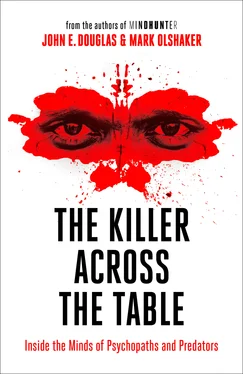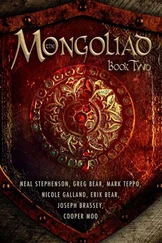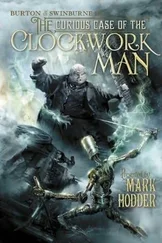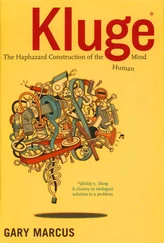1 ...8 9 10 12 13 14 ...18 Then they received a telephone call that changed her life yet again. It came on July 26 of that year, from Deputy Chief of Detectives Ed Denning from the Bergen County prosecutor’s office. He said that Joseph McGowan was coming up for parole. This was a shock, because Rosemarie had not been informed that six years could be cut for good behavior and work credit. He had been turned down in 1987, the first time he’d been eligible, but his chances looked better this time since he’d served more than his minimum sentence.
It had been twenty years since the murder, and Rosemarie wanted to bring Joan back into the public consciousness. “It wasn’t about dwelling on the grief but being a squeaky wheel to fight to keep her killer in prison and trying to make sure he wouldn’t be up for parole every few years. I thought starting a movement of the people would help us all.”
The mother of a former Tappan Zee High cheerleader called Rosemarie to say her daughter felt she had been stalked by McGowan back in school and would be “petrified if he came out.”
Rosemarie knew she’d have to fight to keep him behind bars and began by working with local and county officials, district representatives and the community to organize a vigil on September 30, 1993, at Veterans Park in Hillsdale. More than a thousand supporters attended. “My divorce plans had to change according to the advice that I sought from an attorney,” she explains. “The focus had to be on the fight to keep McGowan in, and that couldn’t be complicated by the divorce.”
And she had two overwhelming reasons to keep him behind bars: to make the punishment at least in some sense commensurate with the enormity of the crime; and to make sure no other young child suffered at McGowan’s hands as Joan had. If there were to be any meaning to Joan’s death, any meaning to her disappearing on Holy Thursday and being found on Easter Sunday, Rosemarie understood, she would have to do something herself. “The message of hope was clear. It would be the movement for child protection and helping society inspired by Joan, Holy Thursday, and Good Friday.” It was as if God, who had ordained free will to mankind and therefore had to suffer the deaths of little children at the hands of those who would forsake His values, was giving her a message.
“I realized then that this is the work I’m supposed to do. And I saw it as getting closer to Joan’s spirit. That’s when the movement started. I didn’t get positive support from my family—instead quite the opposite when family members verbally assaulted me, actually threatened me with physical force, and sent harassing mail. In the late 1990s, Michael and John would become involved, but before that, I was pretty much on my own.”
She began speaking out. She began organizing. She spearheaded a nine-month campaign to make the public aware of the danger of child predators and the reasons that they should be kept in prison. The parole board listened and once again turned down McGowan’s request. Just as important, it reviewed his case and had him transferred to the maximum security facility in Trenton, where the warden felt he should have been to begin with. Additionally, the board imposed a future eligibility term (FET) of twenty years before his next hearing. With good behavior and work credits, this would be reduced to twelve years, making him once again eligible in 2005.
And Rosemarie did not just let matters stand once McGowan’s 1993 parole request was denied. She began a grassroots movement, organizing parents and other interested parties in rallying and petitioning for justice for child victims. She wrote; she called; she appeared on television and radio and sat for interviews. Wherever she went, she handed out little green bows, Joan’s favorite color.
It took three years of essentially full-time advocacy. Then, on April 3, 1997, Governor Christine Todd Whitman signed what became known as Joan’s Law. Wearing a green bow on her lapel in memory of Joan, Governor Whitman sat in bright sunshine outside the Bergen County jail. Rosemarie, Frank, and Michael and John stood around her, surrounded by police officers, detectives, sheriff’s deputies, and legislators, all of whom had supported the campaign to have the law enacted.
Joan’s Law amended the New Jersey criminal code to mandate that anyone convicted of the murder of a child under fourteen years of age during the commission of a sexual assault would be sentenced to life in prison without possibility of parole.
Rosemarie came to the podium and thanked the governor and the sponsors and supporters of the bill. “Maybe this can deter crime—we hope,” she stated. Then she held up a photograph of Joan and said, “It’s she who we have to be thankful for. Joan’s spirit is very much alive. She wants you to smile more. She wants you to be more positive.”
The following year, on October 30, 1998, President Bill Clinton would sign a federal version of Joan’s Law. Six years after that, on September 15, 2004, New York governor George Pataki traveled to Harriman State Park, the site where Joan’s body was found, to sign a Joan’s Law for his state. Rosemarie could not make the signing but listened on the phone from her bed. It was where she had made many of her calls to connect with people to get bills passed.
Ironically, one convict Joan’s Law would not affect was Joan’s killer, Joseph McGowan. He had been sentenced before the statute went into the code, and the law could not be made retroactive. So, according to the instructions of the court of appeals, the New Jersey parole board and Rosemarie D’Alessandro prepared for the next hearing.
This was particularly problematic because shortly after the 1993 decision was handed down, McGowan appealed the ruling that didn’t allow him a parole hearing until 2005. The appellate court requested additional information from the parole board, then let its ruling stand. Over the next few years McGowan appealed three times, and the D’Alessandros went to each one. Their victim impact statements were difficult to go through, but Rosemarie felt she had to make Joan’s ordeal, and their own, as real to the board as possible.
In May 1998, the court ruled that the board had set the parole bar too high. It stated that board members should not consider whether he had been rehabilitated or not, only whether there was substantial reason to believe he would commit another violent crime if released. In other words: Was he dangerous?
And that’s where I came in.
5
WHAT THE PSYCH PEOPLE SAID
Over the first fifteen years of McGowan’s incarceration, the case file showed, and the previously cited appeals court decision confirmed, there were at least eight psychological evaluations in addition to the initial ones conducted by Drs. Galen, Effron, and Revitch in 1974. During this fifteen-year period, McGowan appeared to be a near model prisoner, not getting into trouble and not stirring things up with other prisoners.
The first several evaluations were brief and relied mainly on self-reporting. This kind of examination of incarcerated felons is always problematic for me. When most of us see a doctor, either for a physical or mental issue, our aim is to be cured or helped, so it is definitely in our best interests to tell the truth.
This logic does not always hold up on the other side of the bars. For one thing, the felon is not seeing the psychiatrist or psychologist by choice; the visit is officially mandated. For another, as far as the felon is concerned, the encounter is not designed to help him “get better.” It is to evaluate his behavior, rehabilitation, and potential dangerousness. He therefore has a vested interest not in telling the truth, but in portraying himself in the most favorable light.
On one of his court-mandated visits to a state psychiatrist following his release from Atascadero, Ed Kemper had the head of his latest victim, a fifteen-year-old girl, in the trunk of his car. During that particular interview, the psychiatrist concluded he was no longer a threat to himself or others and recommended that his juvenile record be sealed. That’s why I don’t trust self-reporting.
Читать дальше












